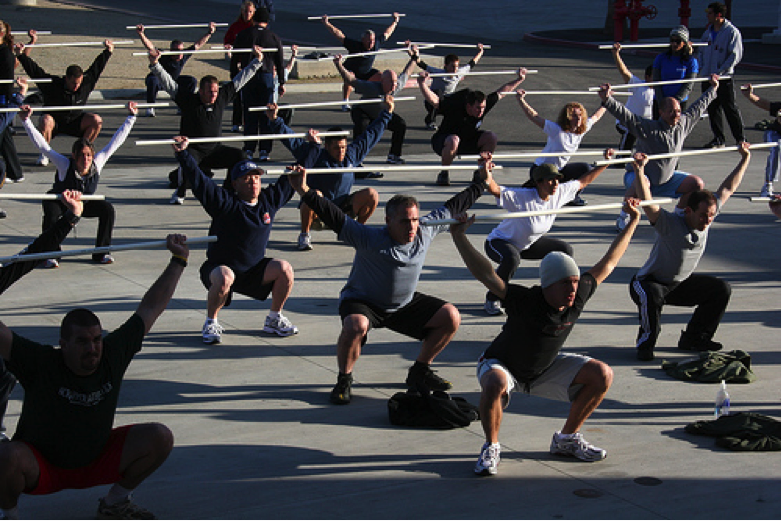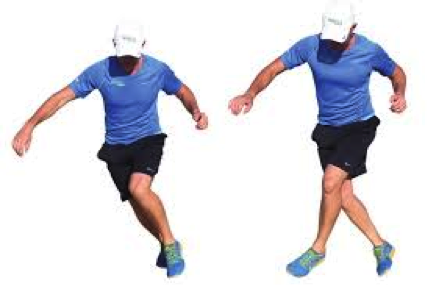Ever heard of Davis’s Law? Or Tony Robbins’ 6 human needs? Or epigenetics? Well, they have something in common – they all extoll the virtues of novelty, and variety, for improved human function across the physical, mental and emotional spectrum.
Let’s unpack this a little. Davis’s Law says that the tissues of our body (muscles and fascia) model along the lines of stress. In other words, the force profile from the things we do most, including our exercise, determine where the lines of strength are, in each of our bodies. This also means it determines where our weaknesses and restrictions are too. Regular predictable patterns mean a narrow band of strength and function and a whole lot of underutilised human! Think distance running and nothing else; or purely traditional linear lifts (squat, bench press, deadlift, row); only backstroke; only walking. Then look at your activities of daily life. Are they the same, day in and day out too?
Now, what does Tony Robbins have to do with this? Well, his 6 human needs of personality are certainty, variety, significance, love/connection, growth and contribution. So yes, we need predictability aka, certainty, but it needs balancing with novelty; with variety, to balance ourselves.
On to epigenetics. In her book ‘Move your DNA’, Katy Bowman uses 20 years as a biomechanist and a working knowledge of epigenetics to build a compelling argument for physical experiences of novelty. Epigenetics literally means ‘above the genes’ and is the science of how environmental factors affect the expression of our genes. As evidence grows that we are no longer victims of our genes but can significantly affect physical outcomes by our behaviour, Bowman talks of the physical body needing ‘nutritious movement’. As an analogy to our eating style, Bowman suggests only doing one or two movement pastimes is like only eating potatoes and tomatoes. Sure it’s great if you like potatoes and tomatoes, but your body needs a much broader range to adequately nourish everything we are.
Movement is the same. She encourages as much variety in our daily movement, as well as the ways we are inactive (ie sitting and laying differently) as humanly possible. In fact, Bowman asserts that the reasons for all those aches, pains, niggles and injuries lay in what you have done up to this point in your life. Repetition got you here. Novel repetition can get you out of here!
Let’s add one more thing to the mix: variety and cognitive function. In his book ‘Teaching with the Brain in Mind’, Eric Jensen asserts that for children to develop optimally, they must engage in 14 different types of play behaviour. Of course, play has rules (Tony Robbins would call this certainty) but it also has a huge element of novelty. This builds connections between neurones, enhances learning ability, releases BDNF (brain-derived neurotrophic factor) in the brain, enables the ability to handle stress and serves to elevate mood.
So what am I saying? Don’t ever repeat a movement, thought pattern or belief? Far from it. To become great at anything you need to practise and repeat. What I’m saying is that for the ultimate function of you, as a human, novelty is an essential part of your life. Find new ways of doing the same things. Replace some of the ‘same’ in your life every now and then, with something novel or different. And when it comes to exercise, mix it up. If you like to lift, try some loaded movement training with a ViPR to create 3-dimensional loading of your tissues. If that’s too ‘out there’ simply altering your footprint (foot placement, internal, external, wide, narrow etc) during your squats gives a different load profile. Like to run? Great! Once a week why not try variable locomotive patterns for a session – grapevine, lateral shuffles, 360 turns, zig zags, slalom runs, backwards, on sand, on grass, uphill and down dale.
How about this: for either example above, once a fortnight, try a game of touch rugby, soccer, AFL, tennis, squash, ultimate Frisbee. Each provides a wide spectrum of movement and intensity. They’re great examples of 3-dimensional loading, engaging mental and emotional responses, all from novel experiences. The only problem, of course, is if that’s all you end up doing! Then new novel experiences need to be found. You get the picture!
If you are a Personal Trainer, then the really cool thing about knowing novelty is good for us is that you can sweep away all the “rules” of exercise and program personal training sessions with novelty, just help your clients move however they want, with any tool, in any environment, and know that it’s simply good for them. Have fun, play, go hard, go easy, try something new, try something old in a new way and enjoy. Happy moving everyone!
Find out more about how to train your clients with novelty in the Behvaiour Change In Exercise Course

